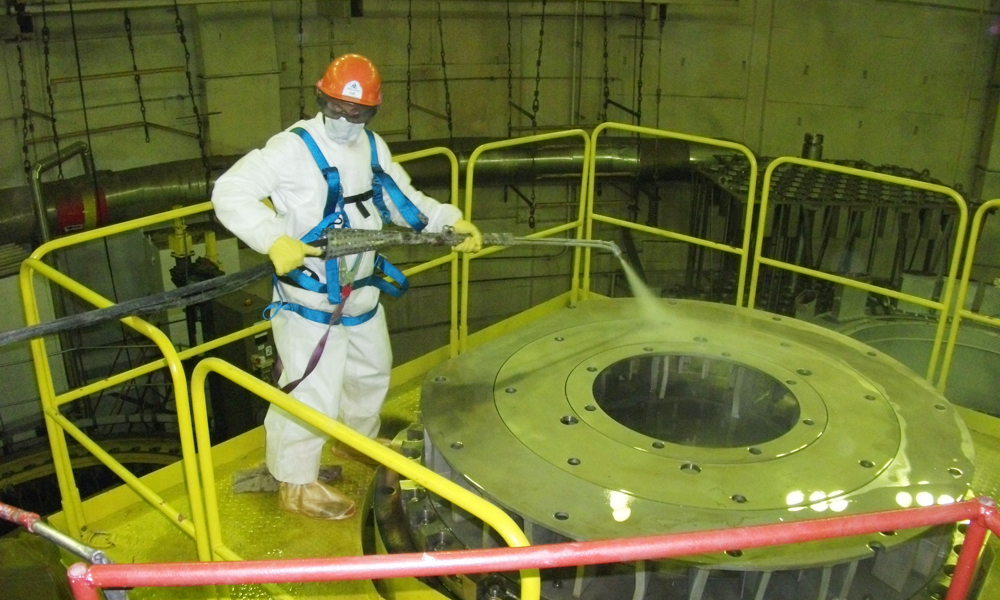
Nuclear Casks of the Future
back to contentsTUK is a Russian acronym for ‘transportation packaging set’. Grouped together, TUKs fit into a dedicated container to transport spent nuclear fuel (SNF) by rail. The challenge faced by the nuclear industry is to ensure prompt SNF removal, reprocessing or transfer to long-term storage. At present, Russia transports spent fuel assemblies using Series 13 casks and carriers.
Casks loaded with spent fuel are delivered to storage or reprocessing sites by purpose-built railway carriers. At the moment, 11 out of 20 carriers intended to transport Series 13 nuclear casks are scheduled for decommissioning in 2017–2019, and only nine of them will remain in operation till 2030. However, this will not be enough to maintain a seamless SNF removal process.
New TUK sweeps clean
Replacing the rolling stock for spent nuclear fuel from VVER-1000 reactors is an undeniable necessity. A large-scale design effort was launched across Rosatom Group companies, with many of them involved in the development of updated nuclear cask designs. The TUK-141O design is the closest to completion at the moment, with a pilot cask already built. The design was licensed, and the regulator issued an SNF transportation permit. In March 2016, the newly designed cask successfully passed acceptance tests, followed by field trials at Kalinin Unit 1 in April, where the existing fuel handling equipment was checked for compatibility with TUK-141O in routine transport operations, including loading and unloading of VVER-1000 dummy assemblies. Last December, the TUK-141O cask and the TK-U-141 spent fuel carrier successfully passed field tests at the Mayak reprocessing facility. In September and October 2017, TUK-141O will be tested in a trial transportation of spent nuclear fuel from the VVER-1000 reactor operating at the Balakovo Nuclear Power Plant to Mayak. If the test is passed, the new casks may be deployed at all operating VVER-1000-based power plants.
Andrei Golinei, CEO of FCNRS: “The TUK-141O nuclear cask and the TK-U-141 railway carrier have proven to be functional, safe and reliable. In 2017, we will arrange trial SNF transportation from the VVER-1000 reactor at Balakovo. If successful, we will begin replacing the container stock for VVER-1000/1200 reactors with new casks.”
Series 14: key features
Series 14 TUKs have been marketed by the Federal Center for Nuclear and Radiation Safety (FCNRS). The new casks are made of steel and weigh over 100 tons. A TUK-141O nuclear cask can hold 18 spent fuel assemblies, or 50% more in comparison with the previous model. “Of course, TUK-141O is better because of its holding capacity. With TUK-13 holding up to 6 tons of spent nuclear fuel, TUK-141O can be loaded with up to 9 tons. This is a definite advantage as it reduces the number of carriers to be used in transportation. This will also bring benefits when entering international back-end markets. The new TUK makes it possible to carry more spent nuclear fuel from VVER-1000 reactors based outside Russia on one train”, says Sergei Kirillov, Deputy CEO for Civil Products at Mayak.
A spokesperson for FCNRS said to RN that the firm neutron protection and double lids of the new TUK ensure exceptional nuclear and radiation safety. Thanks to enhanced safety levels, the time needed to cool spent fuel assemblies in the storage pool can be reduced by half. TUK-141O is designed to handle spent nuclear fuel with a high heat release (up to 36 kW per flask) and is therefore suitable to carry spent fuel from VVER-1200 and VVER-TOI reactors.
After the removable inner casing is upgraded, the cask will be able to hold damaged or faulty fuel assemblies. With minor structural adjustments, the new TUK is fit for carrying spent nuclear fuel from foreign nuclear plants by rail.




